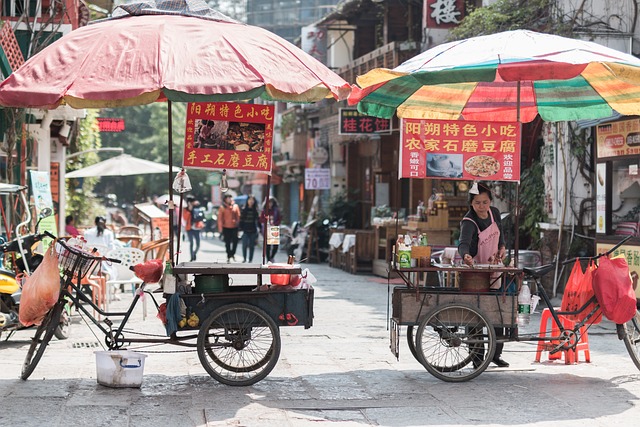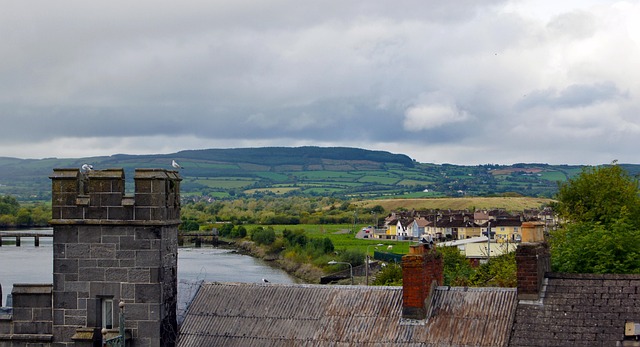Expansive freeway networks offer both advantages and challenges for communities and the real estate market. While efficient transportation routes boost local economies and property values, freeways can displace residents and cause traffic congestion, decreasing neighborhood desirability. Strategic planning and design are crucial to integrate connectivity, environmental considerations, and future growth needs. Well-planned freeways facilitate access to new areas, attract businesses, and enhance community pride. Freeway infrastructure projects, like the Interstate 75 expansion or Beijing-Shanghai High-Speed Rail, stimulate economic growth, encourage investments, and spur real estate development, revitalizing regions.
“Unraveling the intricate web of freeways and their profound impact on community connectivity and real estate dynamics is essential in today’s urban landscape. This article explores how an expansive freeway network acts as a catalyst for economic growth, offering unprecedented access to communities previously isolated by geographical barriers. Through a comprehensive analysis, we delve into the strategic planning, innovative design, and successful case studies that have reshaped urban areas, significantly influencing real estate values.”
The Impact of Freeways on Community Access and Real Estate Values

The construction of an expansive freeway network has significantly altered community dynamics and real estate landscapes. By providing efficient transportation routes, freeways enhance accessibility for residents, enabling easier commutes to work, schools, and recreational areas. This improved connectivity can lead to a boost in local economies and attract businesses, creating vibrant hubs around these transportation arteries. Consequently, real estate values tend to rise in areas with good freeway access due to the increased desirability of living closer to amenities and opportunities.
However, it’s essential to consider that while freeways bring numerous benefits, they may also displace communities and disrupt local cultures. The process of building these networks can result in the relocation of residents, especially in urban areas where land is scarce and expensive. Additionally, certain neighborhoods might face negative impacts on their real estate values if traffic congestion becomes a persistent issue, negatively affecting quality of life and desirability.
Planning and Design Considerations for Efficient Freeway Networks

The planning and design of an expansive freeway network are pivotal in ensuring efficient connectivity, fostering economic growth, and enhancing quality of life for communities. Engineers and urban planners must consider factors like traffic flow dynamics, environmental impact, and future population needs to create sustainable transportation infrastructure. Integrating real estate development considerations into these designs is crucial; well-planned freeways can facilitate access to new housing subdivisions, commercial hubs, and industrial zones, thereby boosting local economies and attracting businesses.
Designing for efficiency involves strategic routing, optimized intersections, and adequate lane width to minimize congestion. Smart integration of technology, like intelligent transportation systems, can further enhance safety and traffic management. Additionally, prioritizing green infrastructure and incorporating aesthetically pleasing designs can make these networks more seamless components of the urban landscape, benefiting both residents and visitors alike in terms of both mobility and community pride.
Case Studies: Successful Freeway Projects and Their Economic Benefits

Successful freeway projects have significantly impacted economic growth and development, particularly in real estate. One notable example is the Interstate 75 (I-75) expansion in Florida. This project involved widening a crucial corridor connecting major cities like Miami, Tampa, and Atlanta. The result was a smoother flow of traffic, reduced commute times, and increased accessibility for businesses. Consequently, property values along the I-75 corridor experienced substantial growth, attracting new investments and fostering economic prosperity.
Another case in point is the construction of the Beijing-Shanghai High-Speed Rail, which revolutionized transportation between two of China’s largest cities. This high-speed rail network not only slashed travel times but also stimulated local economies along its route. Real estate developers benefited from improved connectivity, leading to a surge in commercial and residential projects near train stations. The economic ripple effect was evident, with increased employment opportunities and enhanced trade facilitating further development across the region.






